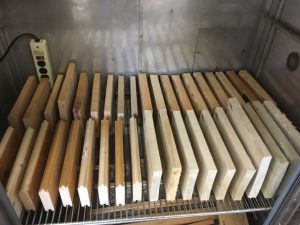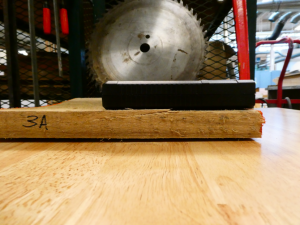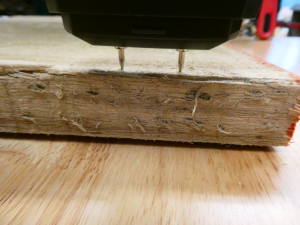100 moisture meters in 100 counties
The moisture content of wood is the ratio of water to wood expressed as a percent and is important for a number of reasons. Moisture content impacts the strength, weight, dimensions, susceptibility to decay fungi, workability, more which impacts construction practices, furniture making, and firewood industries. The more that is known about wood and our ability to measure moisture content, the greater likelihood problems and financial loss can be reduced.

The equation for moisture content calculation by hand is (green wood) – (oven dry wood) / (oven dry wood) expressed as a precentage. This equation is based off weight of the sample and calculates the amount of water that was in the original board that is lost when drying lumber. The handheld moisture meters are able to do these calculations electronically through two different methods.

The first type of moisture meter is a capacitance moisture meter which sends electrical signals through a material to determine the water content. The other type of meter is a resistance meter which sends electrical signals between two pins and the smaller the resistance the greater the moisture content. Both types of meters come in a variety of sizes, capabilities, thus finding the most useful moisture meter for professionals and homeowners is crucial.

NC State’s Wood Products Extension team consisting of Dr. Phil Mitchell, Dr. David Tilotta, Dr. Frederik Laleicke, and Matthew Byington are comparing 12 different moisture meters in an effort to best educate natural resource agents and homeowners alike. The Wood Products Extension team is a leading partner and knowledgeable educating resource in the state of North Carolina.